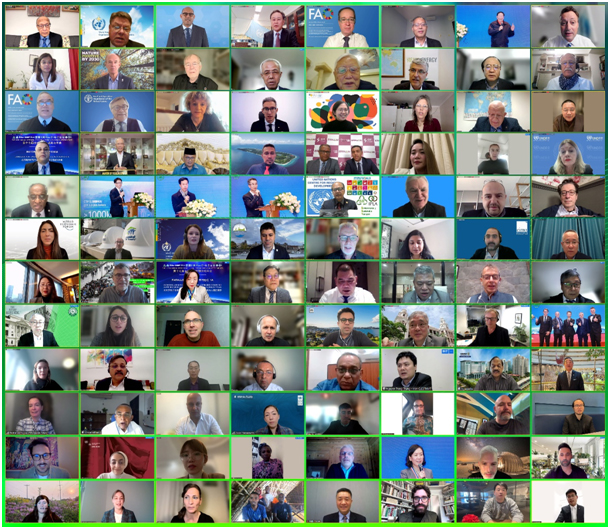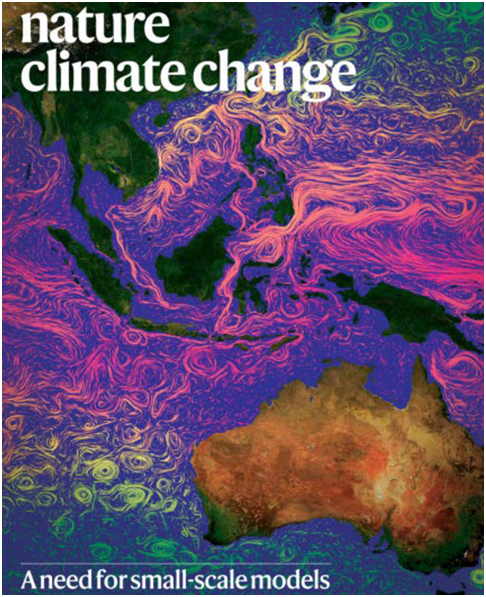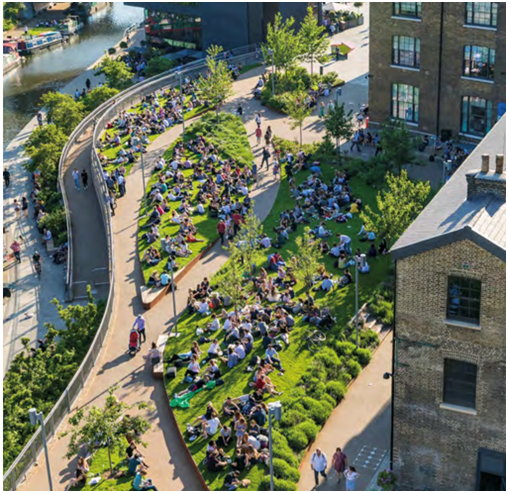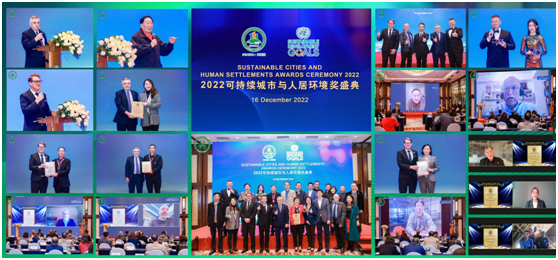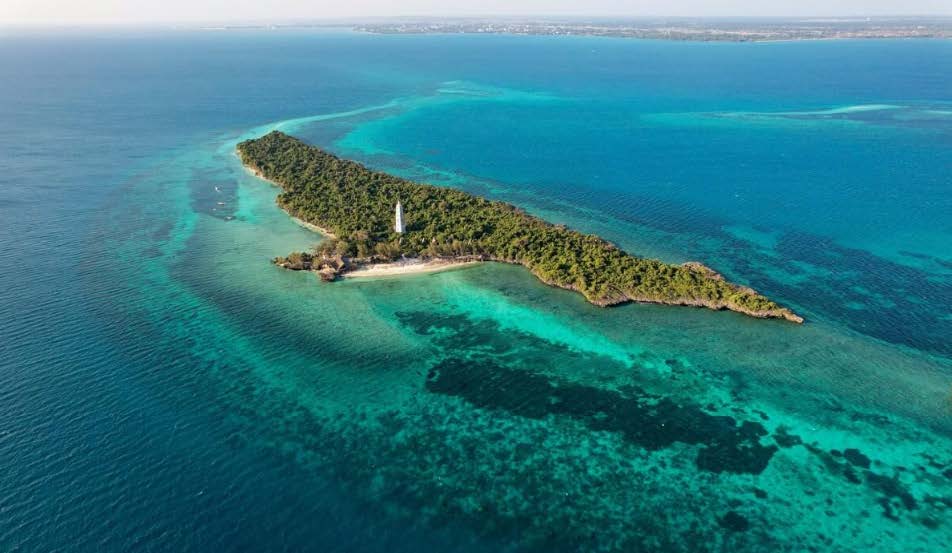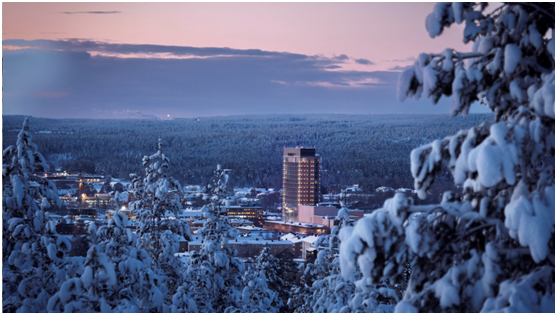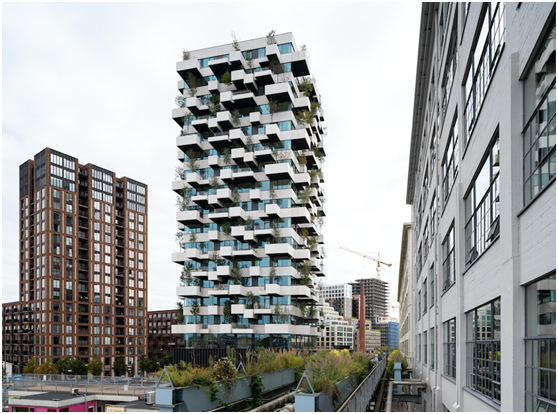Committed to Sustainable Cities and Human Settlements for All
In Special Consultative Status with ECOSOC
As one of the most important conferences worldwide focusing on sustainable cities and human settlements, the 17th Annual Session of Global Forum on Human Settlements (GFHS 2022) was successfully held in a virtual format on December 15-16, 2022, with the theme being Together for a shared safer and greener urban future: resilient, carbon-neutral and nature-positive cities.
25 leading organizations joined GFHS 2022 as co-organizers and collaborators, including 10 major UN agencies and a group of well-known international organizations. More than 80 outstanding individuals contributed to the forum, including heads of international organizations, senior government officials, mayors, renowned experts, scholars, and business leaders. Covered by a number of mainstream media outlets around the world, the two-day forum has reached over 100,000 professional audiences through live streaming and remote participation. Participants representing more than 75 countries conducted in-depth discussions on 10 key issues, put forward scientific solutions and policy recommendations, reached a consensus on a set of outcomes and recommended a batch of outstanding sustainable development practices and innovations.
Through the two-day discussions, we, the participants of the 17th Annual Session of Global Forum on Human Settlements, acknowledge the issues and points recommended as follows, and reinforce the urgent call to accelerate the collective action at various levels, to make significant stride toward resilient, carbon-neutral and nature-positive cities and communities, and to achieve the end goal of leaving no one behind and no life behind.
1. The world’s most extraordinary infrastructure is the biosphere. Land, woods, oceans, the atmosphere, rivers, lakes, plants and animals should all be respected and used properly and sustainably. We should not drain or waste them recklessly. Such a rule of thumb is the essence to build a nature-positive city per the knowledge and experience of the indigenous people.
2. Local democracy coupled with good governance at the local levels is a key factor for the brighter future of all cities. When States treat local authorities as partners and allow urban residents a voice in the way their streets, stores and workplaces are managed, cities are usually more efficient and livable. Such cities in turn enhance democracy nationally and make local and national economies stronger.
3. Evaluating the challenges during five years since the adoption of the New Urban Agenda, this year UN experts identified the following manifestations: one, Urban areas are increasingly epicenters of crises, insecurity, and violence, fueling displacement and forced migration; two, Housing remains largely unaffordable both in the developing and developed world; three, Femininization of urban poverty; and four, Accelerating urban action for a carbon-free world.
4. We need to be mindful of the complex transformation that is needed when it comes to rural-urban coexistence, particularly in how we take a more holistic approach towards human wellbeing and conservation of natural ecosystems. As we enter the new phase of implementation of the climate change agenda, we need to ensure that the solutions we consider are reflective of the complexities and demands of addressing different aspects of human settlements.
6. Achieving carbon neutrality is a long and complex process. In line with the principle of building the new before discarding the old, China will advance initiatives to reach carbon peak and carbon neutrality and, at the same time, guarantee a secure national energy supply. From a global perspective, the most urgent tasks to address the climate and biodiversity crises are decarbonization and decoupling (economic development does not come at the expense of massive consumption of resources). We need to promote decarbonization and decoupling more effectively with synergy: the former equals the latter, and the latter promotes the former. In other words, tackling climate change helps to conserve the biodiversity, while biodiversity conservation contributes to climate change mitigation.
7. Some challenges and opportunities are common across wide swaths of the globe while others are regional in nature. In turn, solutions must acknowledge these regional differences to ensure reliability and affordability of energy services and to secure public acceptance of needed changes, including by ensuring that people are both protected from any potential negative impacts of the transition to net-zero energy systems and well-placed to benefit from this transition. Nations and regions will achieve their individual milestones at different paces and adopt a mix of technologies that are situationally appropriate, with the long-term aim to create equity across regions with all contributing to global net-zero goals.
8. Currently available technologies can help to better manage energy demand, improve efficiency, and support both low-carbon economic growth and job creation. But progress in the efficient deployment of these technologies faces a number of challenges, including non-technical barriers such as a lack of policy support, perceived and real project risk, lack of financial support for low- and middle-income countries, lack of access to low-cost capital, long permitting timelines, community pushback, rebound effects, and supply chain challenges. There is significant potential to both accelerate low-cost energy efficiency improvements (e.g., building and street lighting) through the adoption of existing technologies and adopt policies designed to ensure local populations can benefit from the transition to low-carbon energy.
9. The research estimates that by 2025, China's non-fossil energy installed capacity will exceed 50% in the total installed power capacity; in 2035, wind power installed capacity will go beyond 50%; from 2050 to 2060, wind and solar installed capacity will be at 69-71%, and will reach 56-60% of electricity generation. The operation performance of a new-type power system in the future has to meet the following five requirements, namely flexibility, resilience, stability, reliability and economy. In terms of the energy supply of high-proportion new energy power system under normal and extreme weather conditions, the simulation analysis indicates that Integrated Energy Production Unit (IEPU) has strong positive and negative two-way flexible adjustment ability, and its duration is basically unlimited. It can realize the large-scale spatial and temporal migration of energy, and improve the resilience of the system under extreme weather conditions.
10. In view of China's national conditions, it is recommended to replace coal and oil-based economy with green methanol-based economy to achieve carbon neutrality. The key strategies include making green methanol from green power and coal, storing, transporting and using wind energy and solar energy in the form of green methanol, and charging green methanol with existing liquid infrastructure.
11. The new distributed energy system can become the heart of a resilient, low-carbon urban energy system that holds the key to carbon-neutral cities. The main features of the new distributed energy system are highly renewable, low-carbon, demand-side responsive, intelligent, and supporting supply-side transformation. It will play an increasingly important role in stabilizing demand-side fluctuations, absorbing new energy, and providing ancillary services in the power market, thus contributing to build a new power system and achieve the dual goal of carbon peak and carbon neutrality.
12. Nature loss is not only perceived as a moral or an ecological issue, but also an economic, a development, a human health issue, as well as a justice issue, as the most vulnerable populations are the most affected. It is even an inter-generational justice issue, as we are leaving a terribly complicated legacy to our children, their children and future generations to come.
13. The tension between the state of the planet, ever growing human pressures, and our awareness and readiness to respond, is a sign of a society in transition. A society at its greatest fork in the road, a turning point, and facing its deepest system change challenge around what is perhaps the most existential of all our relationships: the one with nature.
14. To become nature positive, we need to halt and reverse nature loss, by conserving more of the nature left on the planet, restoring what is possible and managing sustainably the rest. Learning from relevant achievements and lessons in other countries, it will be essential to leapfrog to quickly deliver needed transformative change; integrated approaches, involving all concerned stakeholders in the urban system, enhance local resilience of the natural eco-systems, setting the foundations for nature-positive cities. Transitioning to a carbon-neutral and nature-positive society and economy is the only path to a safer and more equitable future for humanity.
16. Urban and peri-urban agriculture (UPA) is important, not only for local food supply but also for overall sustainable urban development considering its multiple functions, such as recreation, education, environment protection and cultural inheritance, which contribute to the process of agriculture modernization, sustainable environment and improvement in UPA practitioners’ income and employment. But UPA development has been challenged by conflict in land use as well as the absence of suitable evaluation systems that recognize the multiple functions of UPA.
17. There is a wide range of initiatives implemented by city governments to improve food consumption, which often attempt to leverage on the cross-sectoral nature of food–its capacity to address the co-dependency of the SDGs. However, the fractured nature of food systems across multiple vertical and horizontal governance scales stymies coherent and sustained policy action.
18. Systemic food strategies that address sustainable diets and climate change need to be underpinned by a more robust evidence-base. Without disaggregated data, it is difficult for city governments to identify policy priorities. Transforming urban and regional food systems is a multi-scalar process that requires a more substantial involvement of national governments and more regular interactions between food system actors positioned at different levels of governance.
19. New modes of governance are required for sustainable food systems. Specifically, we need to develop an understanding that urban food systems are not peripheral to core urban mandates. While many local governments assume that they have a very limited food mandate, they in fact have immense power to shape the food system. Urban food systems are driven by local economies, infrastructure, and social policies, and therefore require transversal governance.
20. Future urban food governance must be responsive to wider global megatrends. Sustainably feeding rapidly expanding urban populations, particularly within the African context, is a challenge that will only grow more pressing in the coming decades, and yet it has been largely off the local and national policy and planning agenda. Urban food security and urban food systems are profoundly shaped by – and play a contributing role in – a series of megatrends, including: climate change, biodiversity loss and resource depletion; urbanization and the associated demand for services and land; demographic shifts; technological change; and shifts in global economic power. Food governance must be framed in the context of these wider processes.
21. We need to combine the strengths and capabilities of formal and informal sector to improve the conditions of e-waste and plastic waste management. While incorporating all resource recovery sectors to develop sustainable waste management systems, we need to address the consumer’s waste disposal behavior and awareness in the context of the country's complex socio-cultural and economic conditions so that implementing innovative 3R technologies could be sustainable in the long term.
22. Holistic zero waste management strategies based on integrated tools, systems and technologies are required for the transition phase of a city. Selection or application of waste treatment technologies for zero waste cities should consider holistic inter-generation resource recovery and product stewardship. In zero waste city planning and design, material flow of the city should be designed and managed in a balanced way, while taking into account the difference in lifestyles, values, and personal behaviours.
23. We need to shift from linear to circular metabolisms. Urban metabolisms must inform strategic planning, agreeing on urban metabolic targets for types of cities; re-aligning local building standards and planning protocols; using urban infrastructure investments as catalysts; linking infrastructure and land use policy; halting enclave urbanism; using the power of design to re-imagine futures in practice; promoting a politics of experimentation; and fostering inter-city learning networks.
25. Life outside buildings is as important as what happens inside them. Green, water, light and earth combine to create a public realm that is rich in natural green life. The well-being of those who live and work can only be enhanced by such a close relationship with nature. In good urban landscape design, the buildings and green landscape are inextricably linked, creating a series of unfolding and everchanging views and vistas as the visitor moves through them. Therefore, it’s essential to promote linear, networked and three-dimensional greening.
26. Those most impacted by climate change are also most affected by the global housing shortage, any measures to support climate change mitigation and adaptation must incorporate housing needs in order to succeed. We must recognize the social and environmental value of housing as a significant economic asset. Housing unlocks other wealth creation opportunities for families; it creates stability, results in better educational outcomes and improves health outcomes for the entire family. It is a key component of adaptation to climate change and a driving force of mitigation. There is an imperative for the industry to seize the moment to shift mindsets, change practices and adopt the policies and standards needed to provide healthy, affordable, resilient, net-zero and sustainable housing.
27. We must continue calling for the doubling of the adaptation finance. The global goal on adaptation must be first tracked and informed by data from the global south where adaptation needs are a priority. To strengthen conversation at the community level is key to inform the adaptation policies, approaches and implementations. It is therefore essential to devolve decision making to the lowest appropriate level.
28. It is important to adopt a whole of city approach to ensure a buy in from all actors, which will allow us to ensure that the most vulnerable are positively impacted. In that regard, it is important to increase the agency of the people and turn people into green actors and investors. It is crucial to ensure a policy coherence between the net zero trajectory of a city and the decentralized efforts to significantly improve the channeling of climate finance at local level.
30. Integrated Water Resources Management (IWRM) is to further integrate climate change and particularly adaptation factors in order to make water management measures climate-resilient and minimize the future costs of adaptation. Water is a ‘climate connector’, so it is urgent to combine IWRM and climate change action to reduce climate impacts on the water cycle and avoid extremely dangerous consequences on human health, all sectors of the economy, and even cross-border relations.
31. We cannot manage what we do not measure. Better understanding of water through data and information enables to make better predictions and is essential for early warning systems. Water information is key to self-confidence and trust in climate action. Reliable data is critical for making effective and timely decisions. Enhanced resilience and sustainable management of water requires reliable and integrated hydrological information services.
32. Multi hazard early warning systems help significantly in reducing the damage and impact of hydrometeorological hazards and are necessary investment with generally a very high return to society. One-third of the world’s population is not covered by early warning systems which should be considered a human right to be universally protected. We should prioritize providing Early Warning Systems for All within 5 years, which is a relatively inexpensive and wholly achievable goal. We have the understanding and the tools to reach zero climate disasters. What is missing is the political and financial will as well as a greater collective ambition.
34. Compact urban forms and decentralized infrastructure are more resilient. Nature-based green infrastructure can optimize water resource management, lessen floods and purify domestic wastewater, fostering peaceful and harmonious coexistence between the city and the natural environment. Ecological restoration through landscaping can increase resilience in coastal cities and offer better-quality public spaces.
35. Ports and coastal cities are the most important decision-making centres for a “blue economy” which should be based on the sustainable use of ocean resources for economic growth, improved livelihoods, and jobs while preserving the health of ocean ecosystem. Zoning and marine spatial planning are important tools for a more effective protection of marine ecological resources.
36. Systematic and inclusive mapping of coastal flooding and other risks is essential for assessing local vulnerability. Riverine and coastal ecosystems and their protection can play an important role in disaster risk reduction and management. All future planning and construction of buildings and infrastructure should include not only climate change mitigation, but also climate resilience to minimize potential loss and damages. Inclusive decision making and public participation remains a key precondition for successful implementation of disaster risk reduction.
1. The Meadoway, A Blueprint for Naturalizing Infrastructure Corridors, Ontario, Canada
As a groundbreaking initiative, The Meadoway has transformed a hydro corridor in Scarborough, Ontario into a vibrant 16-kilometre stretch of urban greenspace and aims to create 104 ha of native meadow habitat that will become one of Canada’s largest linear urban parks linking key community and tourism destinations across the Region. The Meadoway, which is a vital component of Toronto and Region Conservation Authority’s Trail Strategy for the Greater Toronto Region, is an innovative city building initiative that will provide a naturalized link between Rouge National Urban Park and downtown Toronto, stitching together more than 15 parks/greenspaces, seven watercourses and tourist destinations.
Urban expansion and intensification are placing increased pressure on the remaining greenspaces of the Greater Toronto Area. Loss of natural habitat is the most significant factor contributing to the reduction of biodiversity, including native plants, birds, pollinators and other wildlife. Meadow habitats have been in decline throughout Ontario due to the expansion of urban areas, intensification of agriculture and the suppression of natural disturbances such as fire. The loss of meadow habitat has led to the loss of food sources, migratory staging areas, and overwintering or nesting areas for several bird and pollinator species.
The Meadoway
However, across southern Ontario there are thousands of kilometres of infrastructure corridors maintained by private companies, government agencies and other entities. Showcasing alternative options like The Meadoway within these infrastructure corridors could help promote beneficial habitat, enhance ecological services, increase flora and wildlife diversity, increase water infiltration and enhance natural corridors supporting species movement, improve flood attenuation via surface water uptake and reduced runoff, increase carbon sequestration and provide opportunities for the public and residents to establish a stronger environmental connection through stewardship of these lands.
Chumbe Island
CHICOP’s aim is "To manage, for conservation purposes, the Chumbe Island Reef Sanctuary and the Chumbe Island Closed Forest Reserve. This includes educational and commercial activities related to the non-consumptive use of the above-mentioned natural resources and the doing of all such other things as are incidental or conducive to the attainment of the above object."
To fund the marine protected area, CHICOP built a Visitors’ Center and a small (7 bungalows) high-end, close to zero-impact eco-lodge on the island. Combining traditional building styles and materials with modern eco-architecture, the technologies for water and energy provision and waste avoidance and recycling of the eco-lodge take full advantage of sunlight, natural ventilation and rainwater, with rainwater catchment, vegetative gray water filtration, composting toilets, solar water heating and photovoltaic power generation. By incorporating business principles into conservation management and education services, Chumbe exemplifies the core principle of the Blue Economy. More: https://chumbeisland.com/
The Swiss National Park
The Swiss National Park encompasses a particularly impressive piece of Alpine landscape, with a wealth of flora and fauna. Within its boundaries nature is left to develop freely; humans remain in the background and are merely witnesses of the evolution that contributes so greatly to the incomparable character of this habitat. The National Park is well known for its extraordinary variety of alpine animals, such as chamois, deer and marmots. A host of alpine plants provide a colorful sight as visitors make their way through the Park.
Jan Gehl is an urban planning master, a renowned architect, co-founder of Gehl Architects. He continues to research and develop the people first approach through his books and lectures. He has published several books, including "Life Between Buildings", "Cities for People", "New City Spaces", "Public Spaces – Public Life", "New City Life", "How to Study Public Life" and most recently "People Cities". He is an honorary fellow of RIBA, AIA, and RAIC.
Gehl's book Public Spaces, Public Life describes how such incremental improvements have transformed Copenhagen from a car-dominated city to a pedestrian-oriented city over 40 years. Copenhagen's Strøget car-free zone, one of the longest pedestrian shopping areas in Europe, is primarily the result of Gehl's work.
While Jan Gehl's research on public spaces and public life began in Copenhagen, it was quickly applied to many other cities throughout Europe, North America, Asia, and Australia. His ideas and approaches to design for public spaces incorporate the cutting edge of technology without losing sight of what best supports and enhances people's experience of everyday life in the public realm. He believes that "Only architecture that considers human scale and interaction is successful architecture. First life, then spaces, then buildings – the other way around never works." He was honored with "Global Human Settlements Outstanding Contribution Award 2022".
Eco Wave Power is a leading onshore wave energy technology company that developed a patented, smart and cost-efficient technology for turning ocean and sea waves into green electricity. Eco Wave Power’s mission is to assist in the fight against climate change by enabling commercial power production from the ocean and sea waves.
Eco Wave Power’s technology is made of unique floaters which are attached to existing marine structures such as breakwaters, piers, and jetties. The movement of the floaters presses hydraulic pistons which transmit biodegradable fluid into land-located accumulators, in which pressure is built, which rotates a hydraulic motor and a generator, sending clean electricity to the grid. The entire operation of the system is controlled and monitored by a smart automation system. In addition, the system is equipped with a storm protection mechanism that protects the floaters when the waves are too high.
Eco Wave Power is currently finalizing the construction of its grid-connected project in Israel, with co-investment from the Israeli Energy Ministry, which recognized the Eco Wave Power technology as "Pioneering Technology" and will soon commence the installation of its newest pilot in AltaSea’s premises in the Port of Los Angeles. The company also holds concession agreements for commercial installations and has a total projects pipeline of 404.7MW, including the newest 77MW project in Ordu Municipality, Turkey, a 20MW project in Porto, Portugal, a 2MW project in Port Adriano, Spain, and others. More: www.ecowavepower.com
Founded in 2020, Shenzhen Tsingtech Lithium Technology Co., Ltd, China is a high-tech entity focusing on the comprehensive utilization of lithium battery resources. The company is committed to the research and development of a new generation of safe and precise separation technology for waste lithium batteries in the world. The solution is characterized by the following: (a) Achieving a safe and environmentally friendly disposal of waste lithium ions at home and abroad, and being resistant to exploding or catching fire or combustion; (b) Phasing out brine discharge technique and realizing no discharge of waste water, waste gas and solid waste; (c) Eliminating high-temperature cracking and the release of highly toxic dioxin gas, with 96.5% recovery of electrolyte; and (d) Adopting a variety of scientific and precise separation technologies to achieve precise separation of all components of waste lithium batteries, safe disposal, recycling and recovery in the whole process.
The company has developed innovative, safe, environmentally-friendly, and precise separation technology solutions. The four core technologies adopted make the waste lithium battery treatment safe, harmless, and intelligent. Most of the raw materials are environmentally friendly and cost-effective and can be recycled. By developing a global leading technology, the company has initiated an advanced solution to the global challenge of disposal and recycling of waste lithium batteries, providing the best technical support for resource regeneration and the closed-loop development of the new-energy automobile industry. The technology helps avoid huge environmental hazards and waste of resources, and contributes to sustainable human settlements. More: www.tsingequip.com
Mass timber has emerged as one of the most sustainable solutions for building structures. Realizing a complex building with mixed uses and a high-rise of 20 story’s, newly opened Sara Cultural Centre broadens the application of a full timber construction and proves that timber is a viable solution for virtually any building type. This project has become a showcase guiding others in our collective transition toward carbon neutrality.
Located in Skellefteå in the northern part of Sweden. Sara Culture Center is home to a regional theatre, a museum, an art gallery, a hotel and a city library. Together the institutions will benefit from each other and empower the local community. Since the opening last year, the place attracts green energy companies following 3000 + new jobs in the region. The Center is constructed of over 13,000 m3 locally sourced timber making it the world’s largest mixed-use timber development up to date. The diverse areas of use have called for a range of innovative solutions in mass timber and steel construction to handle spans, flexibility, acoustics and overall statics.
Sara Cultural Centre
The Trudo Vertical Forest, designed by Stefano Boeri Architetti and built in Eindhoven in 2021, is conceived as part of the urban renewal plan of "Strijp-S", a former industrial site, and has a strong value in terms of urban renewal of the city. It also represents Stefano Boeri Architetti's vision for a new biodiversity architecture, applying the Vertical Forest model to social housing for the first time.
Trudo Vertical Forest
The building represents the achievement of a real milestone: by making the Bosco Vertical typology accessible to everyone, including low-income tenants, the project demonstrates that living in contact with trees and greenery is not an exclusive prerogative, but can in fact become a viable choice for citizens from very different economic backgrounds. The Trudo Vertical Forest succeeds in ensuring high quality, through the flexibility of interior spaces and their relationship to open spaces, in a building with a significantly reduced construction cost. The project does not merely modify the urban landscape, but aims to set new housing standards for social housing, thus responding to environmental and housing issues.
The City of San José is located in the heart of Silicon Valley, and is home to over one million residents – making San José the 10th largest city in the USA. The city has set an overarching smart sustainable city strategy and vision, coupled with a data-based planning, which is key to drive the implementation of specific smart city initiatives on the ground. The city has been leveraging its advantages in smart city resources and technology to undertake a digital transformation for the purpose of making the city safer, more inclusive, user-friendly and sustainable.
Specifically, though facilitating public-private partnerships and community WIFI partnerships, the city has been scaling up efforts in addressing digital divide by providing better access, affordability, and literacy. The City also works to ensure the smart city infrastructure is balanced off by privacy protection. The City also partners with telecommunication companies that build and maintain antennas across the City, many of which are installed on City property, such as streetlights, traffic lights, and rooftops. These antennas are known as "small cells". The City seeks to leverage small cell technology, which will offer enhanced voice and data capacity citywide, improve emergency communication capability, and pave the way for the equitable deployment of 5G.
The City enables deployment of energy and water management technology in buildings, and promotes real-time data analytics to help residents and businesses conserve energy and water. It is also rapidly deploying sensor technology on city streets and infrastructure and explore on-demand mobility apps to reduce GHG emissions, while creating a “race to the top” across all City agencies and local businesses to improve energy and water efficiency.
10. Tantou Village, Global Human Settlements Model of Village
Located 8 kilometers away from Wuyi County, Zhejiang Province, China, Tantao Village covers an area of one square kilometer, with a population of 527 in 220 households. With a history of 750 years, the Village has conserved an area of about 18,000 square meters’ ancient architecture that date back to Ming and Qing Dynasty. Due to the confluence of Wuyi River and Bailu River, hundreds of acres of wetland were created. In recent years, Tantou Village has successively implemented the initiative of "co-governance of five waters" and the development of boutique villages. The smelly river has turned into a beautiful wetland. The ancient arch bridges are connected vertically and horizontally, surrounded by green and stretching island, and flying swans, egrets, and wild ducks, offering a vibrant spectacle and at the same time building the resilience of the village.
The Village has been vigorously developing cultural and tourism industry, attracting boutique homestays, cultural and creative industries, and specialty restaurants. Many literati come here to run poetry clubs, painting galleries, and studios. 15 entrepreneurship projects were incubated, fostering businesses and creating employment. The Village receives more than 100,000 tourists every year. The income of the whole village has increased from 505,000 yuan in 2015 to 1.63 million yuan in 2021, making it a pioneering place for common prosperity and a tourist destination in central Zhejiang. The Village has been awarded various honors such as National Demonstration Village of Rural Governance, National 3A Scenic Spot, National Forest Village, Provincial Traditional Village, and Provincial Civilized Village.
Located in the south of Jinan City, Shandong Province, the Elite City covers a total area of 3.5 million square meters, with a total construction area of 5.43 million square meters, a community greening rate of 60%, and a population of more than 110,000. It was invested and developed in 2004 by Shandong Luneng Genfu Development Co., Ltd., a subsidiary of China Green Development Investment Group Co., Ltd. Holding to the overarching blueprint, the developer adopted "people-oriented development" and integrated sustainable development into the project planning and design. To highlight its feature on health, the project is finely managed and implemented throughout its design, material selection, construction, operation and management. Through continuous upgrading and innovation, the developer has been improving the community livability, health, durability and sustainability, and is committed to building a super large-scale high-quality demonstration community with complete supporting facilities, mixed uses, and a full life cycle. The project provides a Chinese model for the development of global green communities.
The company attaches great importance to ecological restoration. The project site used to be a place with many quarries and lime mines, with serious erosion of the mountain. After long-term and unremitting efforts, 6 mountainous areas have been restored, covering an area of more than 300,000 square meters. More than 40 kinds of trees (totaling 100,000+ plants) have been planted. A 30-kilometer trail has been built around the mountain. There are multiple sports parks with a green area of more than 2 million square meters, as well as an ecological forest park where 2000+ pigeons are bred.
The project has been presented with several certifications and awards from home and abroad in terms of green, low-carbon, and healthy development. 16 green building certifications has been obtained, including LEED Platinum, BREEAM Excellent, and China’s Three-Star Green Building Label.
In terms of health, the company took the lead in establishing the "Quiet Residence" evaluation system and developed patented sound muting technology. 4 new projects have been awarded platinum or gold certification of "Quiet Residence". As the largest healthy community, the whole project was also the country’s first being awarded the gold certification for healthy community operation.
Since 2016, the concept of sponge city has been fully implemented in the newly-built community and the sponge city certification has been presented to 10 residential areas. The project is up to the mark of controlling 75% of the annual runoff. The community is equipped with a large-scale reclaimed water station, with a daily treatment capacity of 10,000 m3, realizing the recycling of sewage and wastewater in the community.






